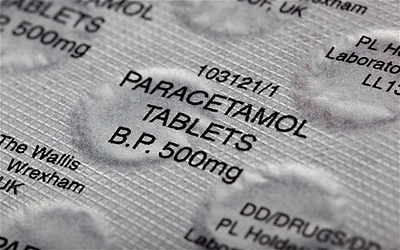
Source: www.telegraph.co.uk
Paracetamol is one of the most commonly used drugs worldwide because it is available without a doctor’s prescription, it has multiple uses, it is quite cheap and it is relatively safe. In this age of social media, it is also one of the most famous drugs, frequently making the rounds via viral shares mostly under the exquisitely scandalous title “Doctors don’t even take paracetamol because it leads to liver failure requiring kidney dialysis (???)”.
Let’s take our finger off the SHARE button for a moment and ponder, how much do we actually know about this drug, and is there any basis to these allegations? Will sharing such information benefit the people on my friend list or will it just add to list of things we SHARE “just in case” it’s true?
Paracetamol (or more fondly known as Panadol in Malaysia) was discovered accidentally in the 1880s. It was first marketed in 1955 as an anti-pyretic (for relief of fever) and analgesic (for relief of pain). Paracetamol is recommended for use, either alone or in combination with stronger painkillers to treat mild, moderate and severe pain (WHO analgesic ladder). It is also often used to treat long term painful conditions such as joint pain, muscle pain or tendon pain. It is chosen for use in patients where other painkillers such as NSAIDs are contraindicated such as in pregnant women, children, people with gastric ulcers and blood disorders.
Surprisingly, the exact mechanism of action of paracetamol has not been fully determined although it had been widely accepted previously that it has a centrally acting (on the brain) effect. However, recent findings from ongoing research shows that paracetamol acts all levels of pain conduction (analgesic effect) and both centrally as well as peripherally for its anti-fever effect.
At the maximum dose of 4g/24h (usually 1 tablet is 500mg so 4g is 8 tablets), no serious side effects occur except possible allergic skin reactions. However, at doses higher than the recommended maximum dose or if it is taken for a long period of time, paracetamol may cause some side effects.
After a person swallows a paracetamol tablet, 90% of it is metabolized (processed) by the liver to produce inactive byproducts or metabolites which are excreted via the kidney (through our urine). Only 5% is excreted unchanged.
Overall, paracetamol is a relatively safe drug to use for fever and treatment of pain according to the recommended dosage. It is has desired effect and is well tolerated in the majority of people using it. However, when it is abused or misused for reasons such as slimming technique, or used together with other drugs or alcohol or smoking may lead to liver damage or even death. Therefore it is important to use it only when indicated and as instructed. Remember, the maximum dose is 4g/24h. So the next time you read a “copy & paste” viral anecdote about “some doctor” in “some hospital” saying that taking paracetamol is bad for you, repeat after me “Only if taken at doses above 4g/24h, for prolonged periods of time, and for improper indications.” See? What a difference actual knowledge makes.
Dr. Hidayah is a medical lecturer in a local university with a Masters in Pharmacology. She is also the Chief Editor of The Malaysian Medical Gazette.
Reference:
- MARTA JÓŹĘWIAK-B BENISTA and JERZYZ.NOWAK, 2014, Paracetamol: Mechanism of action, applications and safety concerns, Acta Poloniae Pharmaceutica ñ Drug Research, Vol. 71 No. 1 pp. 11-23, 2014.
[This article belongs to The Malaysian Medical Gazette. Any republication (online or offline) without written permission from The Malaysian Medical Gazette is prohibited.]
